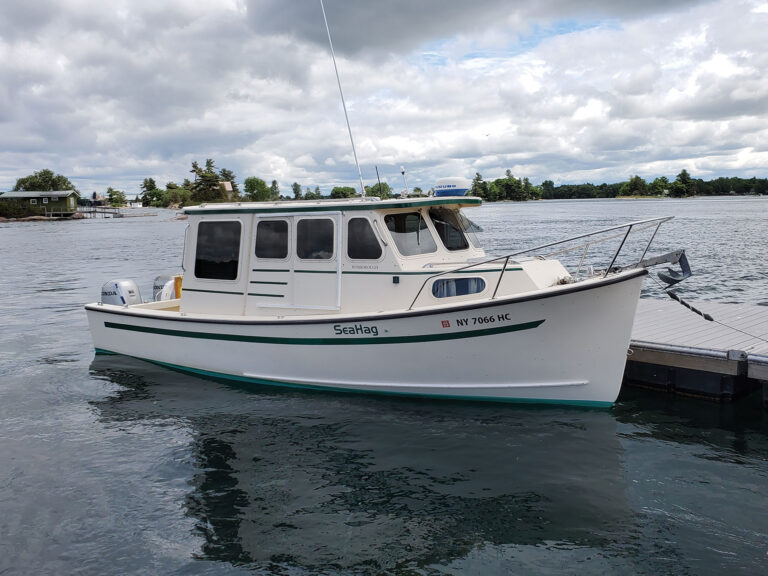Neglecting the teak on your boat? It’s not too late to restore the relationship
More than a cut above, teak is the best of the boatbuilding woods, and for good reason. It can be varnished to a lustrous finish, oiled or left to weather to a silver-gray. It is virtually impervious to waterborne pests, such as the teredo worm, and will last years with practically no maintenance.

Teak (Tectona grandis) grows predominantly in southeast Asia, most notably Myanmar and Thailand. The teak is a large tree and once it reaches full maturity it can stand 120 feet tall. Thus, each tree can yield substantial amounts of useful timber.
Many years ago, I was the captain of a 72-foot wooden ketch with main planking that was solid teak. The boat was more than 100 years old, but the planking below the waterline was in almost perfect condition, as we learned when we had to remove some of her copper antifouling sheeting.
Today, cost considerations limit the use of teak aboard recreational boats to primarily trim and decking. A well-varnished toerail or rubrail can elevate even a fairly modest boat from the mundane to the beautiful.
I have an abundance of varnished teak on my boats. Caring for it requires time and patience, but the compliments we get when we cruise and the pride of ownership I feel when I walk down the dock after a long week at the office make the hard work worthwhile. Unlike many woods, even teak that has been neglected can be restored to a prize-winning finish with a little elbow grease and time.
Varnishing teak
When it comes to varnishing, there are a thousand ways to approach the job, but my technique has served me well for many years. There are lots of varnishes on the market, including those that say you don’t need to sand between coats. I’m not necessarily advocating one product, but the best advice I can give is to try a product and stick with it. Follow the manufacturer’s recommendations and you should achieve good results.
Get to know your varnish before trying something else. Do not switch just because you see some new wonder product at a boat show. Ninety percent of getting a good finish happens before you even dip a brush into the can. You can use the very best products, but if you are sloppy during preparation the result will be disappointing at best.
On previously varnished surfaces that are in good condition, you will merely be prepping the surface for additional coats and you can skip the following step. On previously varnished surfaces where the varnish is far from intact, the varnish must be removed and the wood taken back to bare wood. Far and away, the most effective way to remove an old finish is to use a hot-air gun and a scraper.
Those whose first inclination is to reach for sandpaper get off to a bad start. This is the slowest and least effective method of getting back to bare wood and it is also the most expensive. There will be times when you have no alternative, but sand only as a last resort to remove a finish.
One word of warning: Although a hot-air gun is far safer than an old-fashioned blowtorch, it still can set things on fire, so be careful. Keep the gun moving and use only enough heat to soften the varnish so it will scrape off easily. Work on one section at a time and be careful not to gouge the wood as you remove the varnish.
With the old finish removed – or with new wood – sand the surface, with the grain, using 120-grit paper. I like to use an aluminum oxide open coat paper, which doesn’t load up like the cheap sandpaper you can buy at a home improvement store. 3M (www.shop3m.com) makes some of the best papers, which you can buy direct or from retailers such as Fisheries Supply (www.fisheriessupply.com), Jamestown Distributors (www.jamestowndistributors.com), or NAPA auto stores.

The work can be daunting, so break it down into manageable pieces. Burn off and sand a handrail, for example, before moving on to the next area. Thoroughly dust the area when you have finished sanding. Use a vacuum and a painter’s dusting brush.
Tape off the areas so the varnish won’t drip on adjacent gelcoat or painted surfaces. Stay away from cheap white masking tape, which does not come up cleanly, especially if left in place for more than a few hours. Use blue or green painter’s tapes, which are more expensive but easier to remove, especially if they’re left in place for a week or more.
With the masking complete, wipe down the teak with a suitable solvent using a clean, lint-free rag; an old cotton T-shirt is ideal. Read the instructions on the can of varnish you will be using. Interlux Schooner is my finish of choice, so I use Interlux 333 solvent, though acetone can be used in a pinch. Keep turning the rag; the solvent will remove surface oils and sanding residue from the teak.
You are now ready to apply the first coat of varnish. The bare teak will absorb the first few coats, which should be thinned a little with solvent so they can more readily be absorbed. Again, follow the manufacturer’s recommendations.
Never use varnish straight from the can; strain it through a disposable paint strainer. Even a new can of varnish will have bits in it that will spoil your finish. I like to use disposable foam brushes because a new one can be used for each coat. Some varnishers like badger brushes, which work great, too. But you must clean them before and after each use. Try to varnish under cover, if possible, on a warm, dry day. Varnishing late in the day or when rain is forecast will affect the finish and can make it look dull and a little milky.
Let the varnish dry for at least 24 hours before applying the next coat. After the thinned coats, apply at least three more at full strength to provide adequate protection from sun and water. I will often apply as many as eight coats for a deep gloss.

I like to wet-sand between coats with 320 silicon carbide wet-or-dry paper. There is little to no dust, it cuts fast and the paper lasts ages, provided it is kept wet.
Using a clean cloth, wipe down the surface with solvent before each fresh coat of varnish. Just before you lay on the varnish, go over the surface with a tack cloth to remove anything that could mar the finish.
Once the last coat of varnish is completed, remove the masking tape. Varnish takes about eight days to reach full maturity, so treat it with respect, especially during the curing period.
Caring for teak decks
More teak decks have been ruined by too much love than anything else. Teak decks do not need oiling, sealing or treating with any other preservative, but they do need a little care. About the best thing you can do with a teak deck is to use plenty of salt water and a moderately stiff bristle brush to remove surface dirt. Avoid using a brush that is overly stiff, as this will scour out the softer wood and leave ridges in the deck. Scrubbing across the deck will go a long way to prevent this and will ensure that the deck seams are not placed under duress. Use plenty of water to wash away dislodged dirt.
Teak is naturally resistant to rot. Using harsh chemicals will remove the wood’s natural oils, making it less able to naturally resist cracking and decay. If the deck has been neglected for a long time, a teak cleaner may be appropriate. I’ve had excellent results with Teak Decking Systems’ deck-cleaning powder. Soak the deck with water, sprinkle the powder on it and let the cleaner go to work. Brush it off using a lot more water. It works, but I wouldn’t recommend this treatment more than once a year at the most.

Working with teak
Teak contains a fair amount of silica, which can dull the edge of even the sharpest tools. If you are new to working with teak, keep in mind you will sharpen your tools more often than you previously have. Power tools require TCT (tungsten carbide tip) cutters and blades, because high-speed steel will be burned and destroyed in short order.
Teak can be glued with epoxy, but the surfaces to be joined should be wiped with acetone to remove surface oils that can prevent proper adhesion.
You should wear a dust mask or respirator when sanding teak or working in any other way that produces a lot of dust. There have been instances in which workers who were exposed to teak dust developed nasal and throat problems.
Environmental concerns
I know a lot of people try not to use teak because they’re concerned about the source from which it came. Like any responsible person, I want to buy wood at a reasonable price from a well-managed and sustainable source.
Although it’s hard to be certain, it seems the most reliable and trusted method is to use only wood that has been certified by the Forest Stewardship Council as coming from a well-managed source. The FSC, based in Bonn, Germany, will only certify timber that is sustainably harvested.
The council tells me that much of the teak that finds its way into the United States comes from plantation-grown forests and is, therefore, produced in an environmentally friendly way.
Visit www.onboardwithmarkcorke.com for more do-it-yourself tips.
This article originally appeared in the December 2010 issue.










